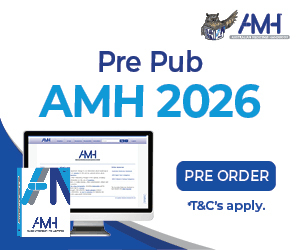Australia’s inaugural Senior Midwifery Advisor is passionate about elevating the profile of midwifery and reducing current health inequities for women receiving maternity care around the country.
Kellie Wilton was appointed Australia’s first Senior Midwifery Advisor within the Commonwealth government’s Chief Nursing and Midwifery Officer (CNMO) Division in September 2022.
The newly formed advisory role has been created to support CNMO Alison McMillan and her team in providing high level advice and leadership to Ministers, the Executive and other stakeholders in the Department of Health and Aged Care on midwifery professional, workforce and policy matters.
“This government has recognised that nursing and midwifery are two very distinct professions and is committed to reducing health inequities in the maternity space. As Senior Midwifery Advisor I will provide high level advice and leadership on maternity care and the midwifery profession.”
Ms Wilton was former Principal Midwifery Officer at the Australian College of Midwives and brings to the role a breadth of experience in the professional practice, clinical and education domains. She is an endorsed midwife and has worked across a variety of clinical settings including Midwifery Group Practice incorporating homebirth, acute tertiary, private practice, country and metropolitan sectors, immigration detention and the Aboriginal Community Controlled Health sector.
“I am able to translate my clinical practice into the government setting and take on a leadership role at the national and international level to provide strategic advice on midwifery and maternity care.
“It’s a really exciting time for midwifery in Australia. This Government is prioritising workforce and maternity care for women. It’s a pivotal time for change and I’m humbled and honoured to be part of the work to further the profession.”

Wilton aims not only to ensure Government and other key stakeholders have an in-depth understanding of the midwifery profession, but also the wider community.
“There is a lack of understanding within the community of what midwives are and what we do. Midwifery is an autonomous profession and we are responsible for our own practice. I want to elevate and lift the profile of midwifery. We have our own regulations and our own registration standards that are separate from those of nursing.”
“You do not have to be a nurse to be a midwife. I am a single registration and qualified midwife. I hope to inspire others and elevate the status as Senior Midwifery Advisor. Midwifery, as an autonomous profession, is only 20 years old. It’s important to showcase the profession as experts in primary maternity care.”
She also wants to see a unified voice on midwifery and maternity care coming from Government.
“So we’re ‘singing from the same song sheet’. This is a crucial thing that underpins a first-time midwifery advisor at this level – that each division and portfolio within Government knows there is this new midwifery resource. It’s really important that we’re cohesive in our language and messaging across all of Government.”
Wilton has significant experience and a passion for Aboriginal and Torres Strait Islander health. She is currently doing a PhD on identifying discrimination and racism in the perinatal practice setting for First Nations peoples.
“Identifying racism that is not so forward facing, more so the medicalised policies and practices that inadvertently have unintended consequences of racism in for women and maternity care. The aim is to identify these practices and develop a framework to redesign policies that are co-designed, co-led and co-discussed with First Nations peoples.”

Currently, one of the biggest challenges facing the broader midwifery profession is retention, with more midwives exiting the profession than those entering, says Wilton.
“There is early attrition in the workforce, and many midwives have reduced their hours for a better work/life balance.
“A recent survey shows that midwives feel that they are unable to provide high quality relational based care – they’re not able to give women and their families the care they want to give. Many midwives are not able to work to their full scope of practice and there are other reasons, including that some midwives see current maternity services as fragmented and medicalised. Some midwives feel they are even doing more harm than good.”
COVID has shone a spotlight on existing problems, says Wilton. “Like many health professionals during the pandemic, midwives have been expected to do more with less; many got COVID themselves, putting themselves and their families at risk to continue to provide high-value care to women, and worked under conditions that posed a risk to their mental and physical wellbeing.”
Wilton is a staunch advocate for the midwifery-led continuity of care model which she says increases job satisfaction and provides high quality based relational care with women.
“It’s the model of care that provides women with high-value care relational care and midwives get to work to their full scope of practice. It’s the model of care that can close the gap [in health outcomes] for Aboriginal and Torres Strait Islander women.”
Other proposed workforce solutions include an increase in quotas for students to enter midwifery education programs, supporting midwives to their full scope of practice, scaling up midwifery led continuity of care models, incentives for those working in rural and remote, and articulating pathways for Aboriginal and Torres Strait health workers to be midwives.
“We need to stem the rate of attrition. The attractiveness of midwifery is certainly there – the number of university applications to do midwifery outweighs the quotas. We want to ensure those people who want to do midwifery can do midwifery, and then make sure they stay in the profession,” says Wilton.
Expansion of Birthing on Country (BoC) models such as Waminda in Nowra, NSW, and the Institute for Urban Indigenous Health’s, Birthing in Our Community program, , Brisbane, have demonstrated good health outcomes for women and babies. These include increased rates of antenatal education and attendance, reduced maternal smoking during pregnancy, increased breastfeeding rates, and a reduction in pre-term births and increase in babies birth weights. The federal Government recently announced $22.5 million for the advancement of Waminda’s BoC Centre of Excellence.
“Even when there’s complexities involved, research shows when a midwife is involved in a woman’s care it still improves health outcomes.”









One Response
On our Symposium on March 11 we will meet Helena Lindgren from Sweden. Informing us about the Swedish Midwifery System.
Follow It hybrid.